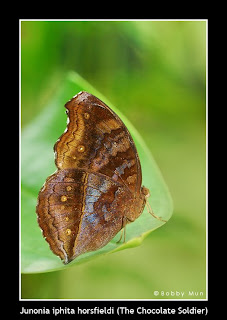Hortpark has launched a Butterfly Garden at Hortpark on May 22, 2009. The Butterfly Garden enables National Parks Board (NParks) to do research on butterfly as part of the species recovery programme and develop new trails in Singapore.
The enclosed Butterfly Garden also enables visitors to learn about the different stages of metamorphosis from caterpillar into butterfly. It showcases some species like Leopard Lacewing (Cethosia cyane), Common Rose (Pachliopta aristolochiae), Lime Butterfly (Papilio demoleus), Tawny Coster (Acraea violae) and Blue Pansy (Junonia orithya), including locally extinct species such as Clipper (Parthenos sylvia), Common Sergeant (Athyma perius)...etc.
Sharing some of the extinct species taken in the Butterfly Garden:






Then 105sqm Butterfly Garden Enclosure

















































